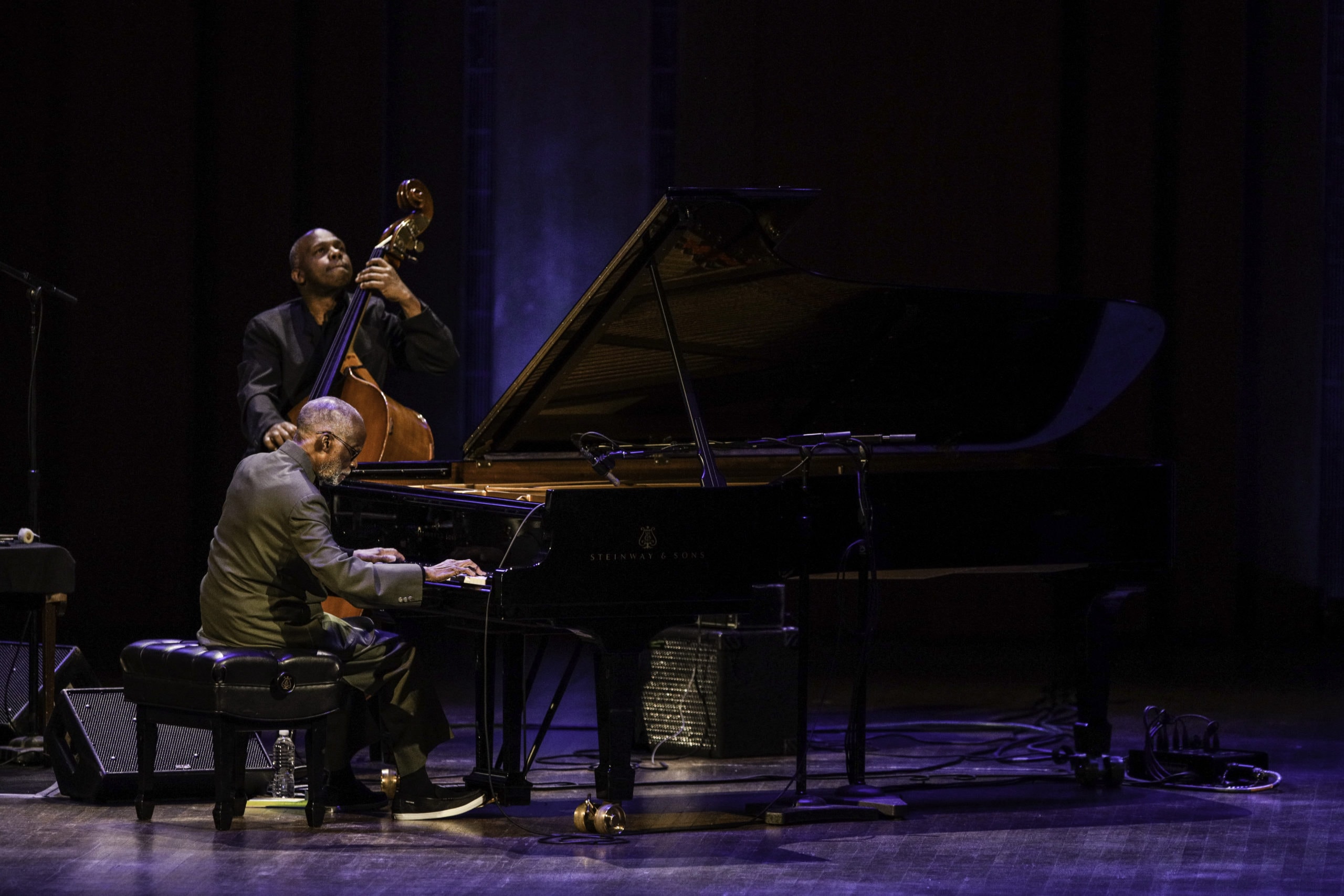Nothing speaks louder about a musician’s accomplishments than receiving a standing ovation and cheers from the audience before he plays a single note. NEA Jazz Master and recipient of the Officer de L’Ordre des Arts et des Lettres from France, pianist and composer Ahmad Jamal, delivered a performance at the Kennedy Center’s Concert Hall on February 8 that not only attests to Jamal’s staying power as a performer and composer but also as a musician whose extensive catalog spans from the 1950s to his latest album, “Ballades,” released in 2019.

A discography like Jamal’s challenges the most avid fan of jazz, or “American Classical Music,” as Jamal refers to the music. However, “name that tune” is not why anyone goes to hear Jamal and his ensemble play. As Jason Moran, the Kennedy Center’s Artistic Director for Jazz, said in his brief introduction, Jamal is the “master.” And to witness the master at his craft with a long history of foundational tunes added to the American Songbook is a rare treat. Particularly since Jamal intimated recently that his performance this past Saturday might be his last one at the Kennedy Center.
Eighty-nine-year-old Jamal with his ensemble consisting of James Cammack on bass, Manolo Badrena on percussion, and James Johnson on drums (Johnson was substituting for Herlin Riley, whom Jamal stated was ill), delivered a laudable and memorable performance.
Without saying a word to the audience, no tunes introduced, no band members’ names shouted out, Jamal and the ensemble launched into approximately thirty-five minutes of non-stop playing, where Jamal conducted from the piano bench with a single raise of the finger, and at times turning his back to the audience and facing Johnson to egg him on to the perfect intonation and rhythm.
Known for impeccable phrasing, spacing, and timing, Jamal delivered standards like “Poinciana,” “Swahililand,” “Beautiful,” and “Blue Moon,” but with nuances that sometimes made the ear tease out the familiar melody. Jamal’s dexterous hands made both single repetitive notes and chords seem to expand, as he at times punctuated the keys with a force that shifted the sonic quality to something unexpected, while at times he used a touch so light it was as if he was stroking a feather across the keys.
Bassist Cammack picking up the melody where Jamal moved into improvisation and percussionist Badrena adding a layer of goodness to everything and an electronic surprise fleshed out the aural experience. Johnson’s ability to meld with the ensemble hardly sounded like someone who was substituting. The chemistry between Johnson, Jamal, Cammack, and Badrena kept the music cool, steady, surprising, invigorating, colorful, and masterful from the first to the last note. Not one moment was dull.
A true testament to Jamal’s accomplishments lies in the ability of his compositions to feel fresh and contemporary. No wonder hip hop artists like Nas sample Jamal’s recordings.
Jamal and his ensemble delivered such an engaging and pleasurable performance that only the flick of the house lights stopped the audience’s clapping after the encore.
One of the last jazz masters from the 1950s Miles Davis’ “Birth of the Cool” era, the consensus from folks about Jamal while leaving the concert hall is that “they don’t make them like that anymore.” Smiles abounded.
Running Time: 90 minutes, with no intermission.
Ahmad Jamal performed February 8, 2020, at the John F. Kennedy Center for the Performing Arts, 2700 F Street NW, Washington, DC. For tickets to future Kennedy Center events, call 202-467-4600, or go online.




